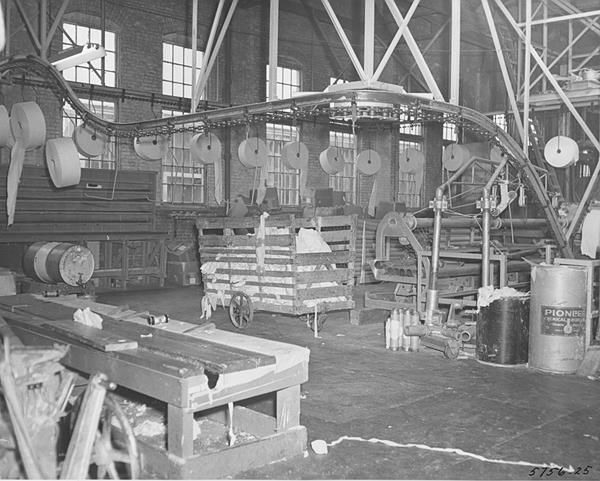Conserving paper in the library and archive is part of our daily work at Hagley. Conservation from an archival perspective means preservation of historical documents. These days, many people may be trying to conserve a different kind of paper, due to its sudden rarity on store shelves. Toilet tissue is something we take for granted. Until that last square on the last roll has been consumed, you probably don’t think much about how it’s made.

Paper in general is composed of cellulose, which may be sourced from a variety of plants. The cellulose fibers are adhered together by hydrogen bonds formed along with water during the papermaking process. Many high- quality papers in the Western world were historically made from linen and cotton rags (cloth that was recycled). Then, the processing of wood into paper pulp became prevalent around 1870. Around that time, volumes of paperback books, newsprint, and catalogs in America were made from wood pulps. However, there are many other fibers used for creating different quality papers. Absorbency is one quality that is determined by the fiber source and the length of the cellulose fiber.
Scott Paper of Philadelphia was the first to produce rolled toilet tissue in 1879. Prior to that, catalog pages or the Farmer’s Almanac were used in the outhouse, but dissolving toilet tissue became essential to prevent clogging of modern plumbing. Early in the 20th century, creped cellulose wadding was developed. It was an absorbent paper made of bagasse fibers, the remainders of sugarcane. In the U.S., Kimberly Clark figured out a way to process spruce pulp to remove the sticky pitch and it was formed into surgical dressing for use during WWI. An excess of this product after the war evolved into an important new feminine product; Kotex pads.
Modern toilet tissue is composed of a mixture of hardwood (birch, aspen, and eucalyptus) and softwood (pine and fir trees). Hardwood fibers are short and add softness. These fibers are sourced from various forests, including Brazil where eucalyptus is grown. Eucalyptus is also used in modern writing and copy papers, owing to the uniformity of its fibers, a low lignin component, and high fiber production due to year-round growth (eucalyptus is an evergreen). The bulk of the tissue and towel products, not the weight, is of greater concern for shipping logistics. Therefore, paper mills for family care products are strategically placed in several regions of the globe to reduce the travel distance needed for product distribution.
According to a leading toilet paper producer, the estimated amount of tissue used by an American consumer is 57 squares a day. If this estimate is correct, a 1000 sheet roll will last about 4 days for a family of four. Perhaps this will help you calculate how long your stash will last?
For those interested in Scott paper history, have look at their timeline incorporating delightful animations of toilet paper rolls!
Laura Wahl is the Library Conservator at Hagley Museum and Library.
